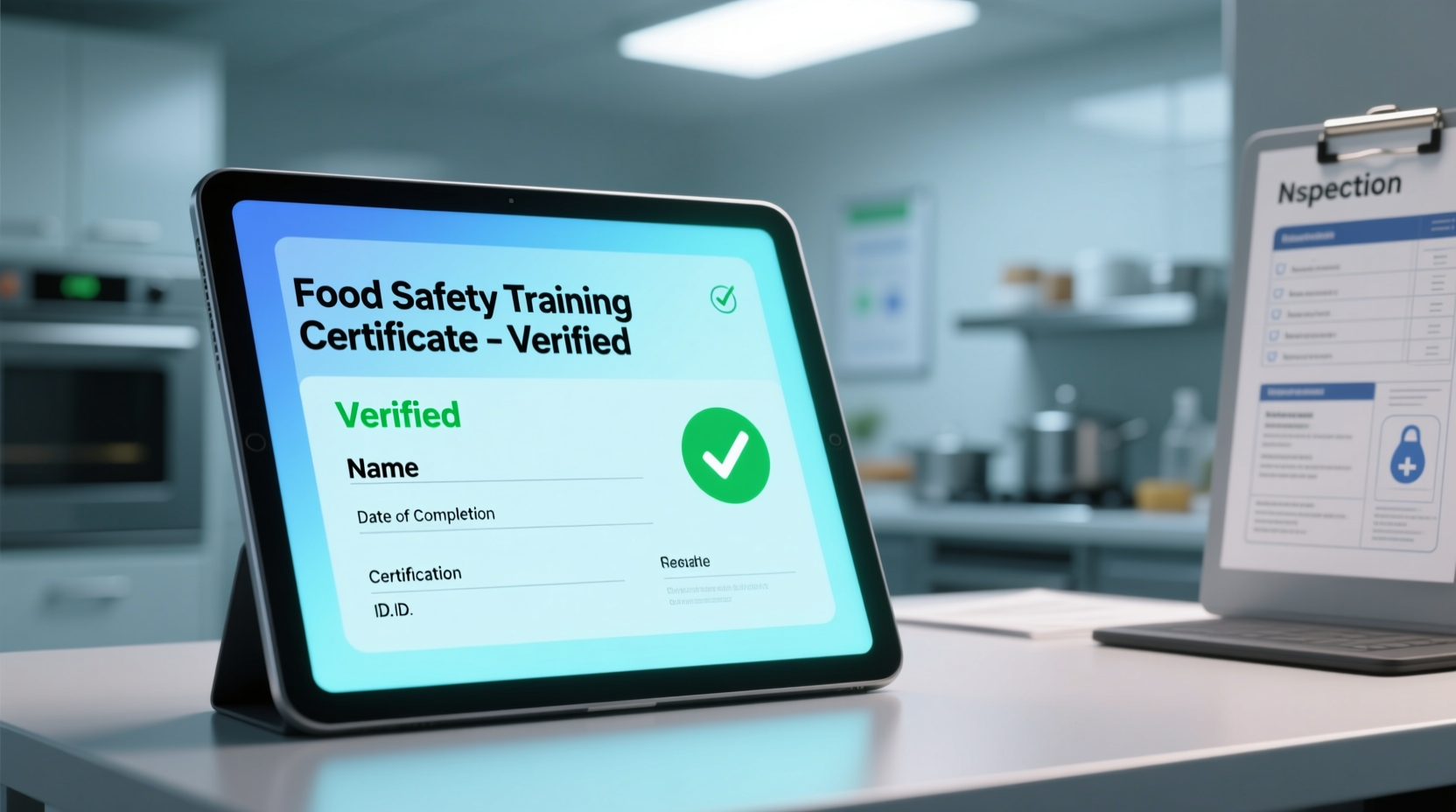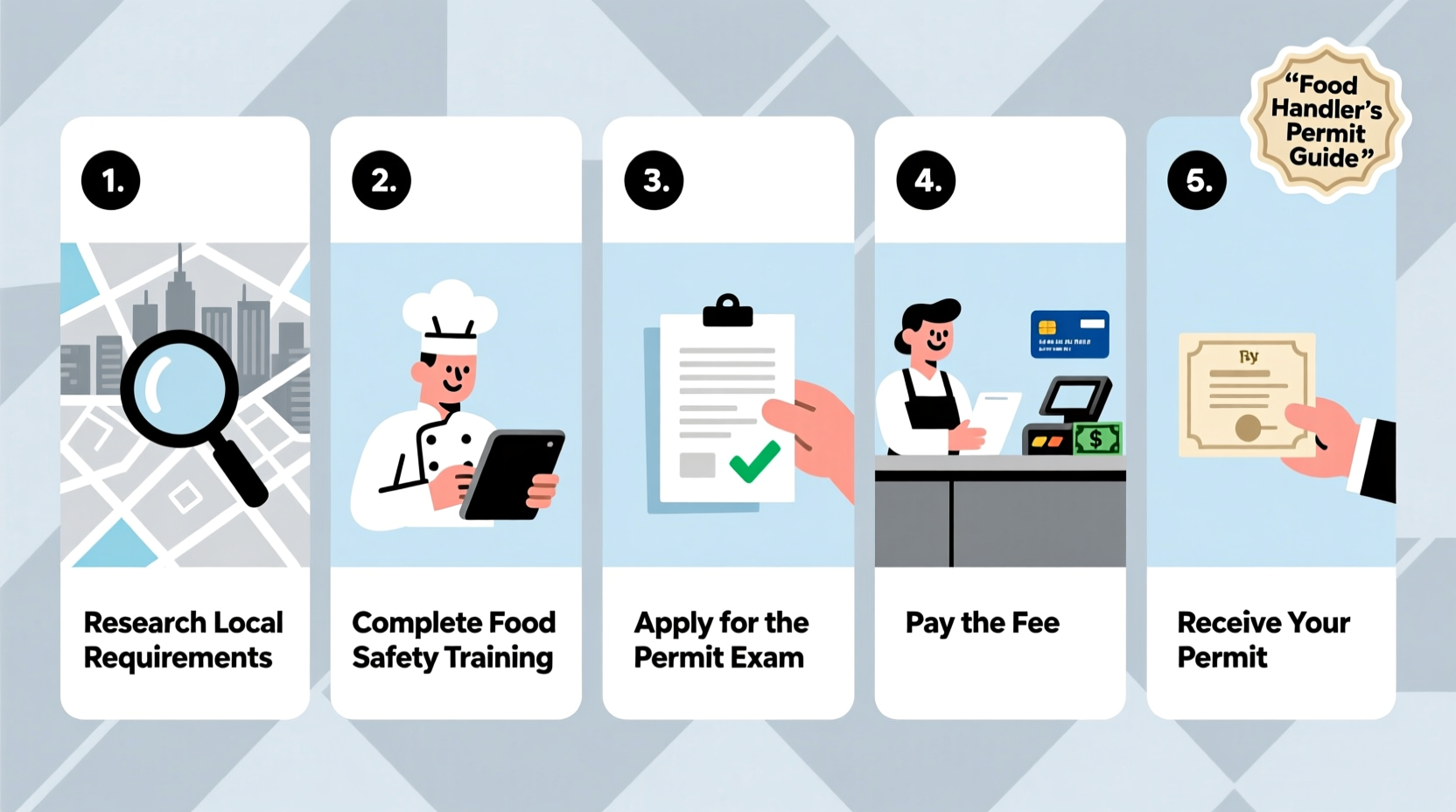Working in food service? You'll need a food handler's permit to legally handle food in almost every U.S. jurisdiction. This certification proves you understand basic food safety practices to prevent illness and protect customers. While requirements vary by location, the process follows a consistent pattern that takes most people 1-3 weeks to complete.
Why Food Handler Certification Matters
Foodborne illnesses affect 1 in 6 Americans annually according to the Centers for Disease Control and Prevention. Proper food handling training reduces contamination risks from improper temperature control, cross-contamination, and poor hygiene. Most states mandate this certification for anyone handling unpackaged food, working in restaurants, or preparing food for public consumption.
Your Step-by-Step Permit Acquisition Process
1. Verify Your Local Requirements
Food handler regulations differ significantly across jurisdictions. Before starting:
- Check if your county or state health department requires certification
- Confirm if your employer covers training costs (common in restaurant jobs)
- Determine if you need a county-specific or state-wide permit
- Verify any age requirements (typically 16+)
| State | Training Hours | Exam Pass Rate | Permit Cost | Renewal Period |
|---|---|---|---|---|
| California | 2 hours | 70% | $15-$25 | 3 years |
| Texas | 2 hours | 70% | $20-$30 | 2 years |
| New York | 2 hours | 75% | Free-$20 | Food handler card never expires |
| Florida | 4 hours | 70% | $20-$35 | 3 years |
| Illinois | 90 minutes | 75% | $10-$25 | 3 years |
State food handler permit requirements vary significantly. Always verify current regulations with your local health department as of 2025.
2. Complete Approved Food Safety Training
Choose between these training options based on your schedule and learning style:
Online Courses (Most Popular)
- Duration: 2-8 hours at your own pace
- Cost: $10-$35 (some employers cover this)
- Providers: State-approved organizations like ServSafe, National Registry, or state health department portals
- Features: Interactive modules, progress tracking, printable certificate
In-Person Classes
- Duration: Single 4-8 hour session
- Cost: Often free through health departments or employers
- Best for: Visual learners or those needing immediate clarification
- Locations: Community colleges, health department offices, restaurant associations

3. Pass Your Certification Assessment
The exam typically includes 30-50 multiple-choice questions covering:
- Proper handwashing techniques and timing
- Temperature danger zones (40°F-140°F)
- Cross-contamination prevention methods
- Safe food storage practices
- Symptoms requiring work exclusion
Most jurisdictions require 70-80% to pass. You'll usually receive results immediately after completing online exams. In-person tests may take 24-48 hours for scoring.
4. Receive and Display Your Permit
After passing:
- Print your certificate immediately (online courses)
- Receive physical card by mail in 7-14 days (some jurisdictions)
- Show digital copy to employer (increasingly accepted)
- Carry your permit while working with food
Some states like New York issue non-expiring food handler cards, while others require renewal every 2-5 years. Check your local regulations for specific requirements.
5. Maintain Your Certification
Your food handler permit isn't permanent in most jurisdictions. To maintain validity:
- Renew before expiration (typically every 2-3 years)
- Complete refresher training (usually shorter than initial course)
- Update contact information with issuing organization
- Report lost/stolen permits immediately
Many employers track renewal dates and provide reminders to staff. Some states automatically notify you 60-90 days before expiration.
Avoid These Common Permit Mistakes
- Assuming reciprocity: Most states don't honor out-of-state permits. Get certified in your current work location.
- Waiting until hired: Complete training before job interviews to stand out to employers.
- Misunderstanding scope: Some permits only cover specific food types (e.g., retail vs. restaurant).
- Ignoring renewal: Letting your permit expire often requires retaking the full course.
Special Situations to Consider
Certain circumstances affect your permit requirements:
- Temporary food events: Many jurisdictions offer same-day permits for festival vendors
- Manager certification: Food establishment managers often need more advanced ServSafe Manager certification
- Volunteer exemptions: Some states exempt occasional volunteers at nonprofits
- Out-of-state workers: Construction crews or traveling workers may need multi-state permits











 浙公网安备
33010002000092号
浙公网安备
33010002000092号 浙B2-20120091-4
浙B2-20120091-4